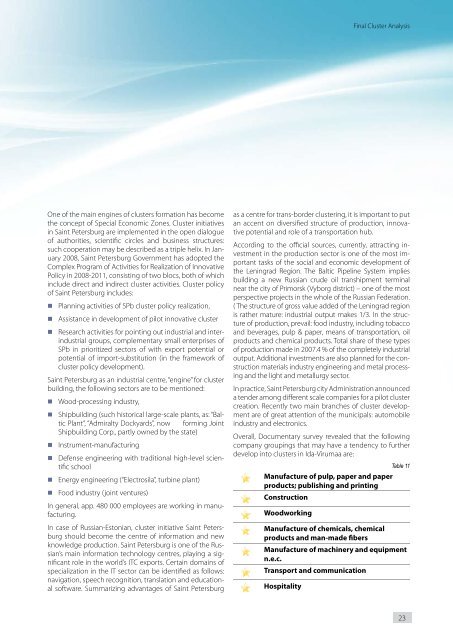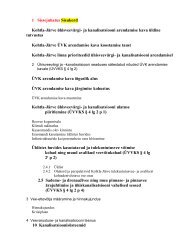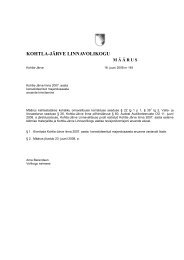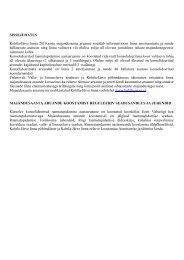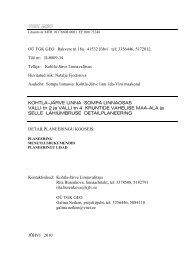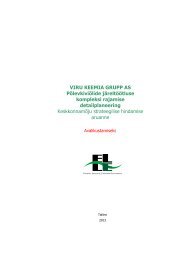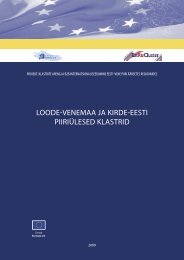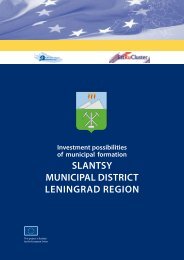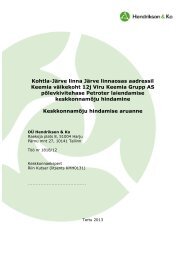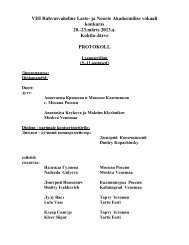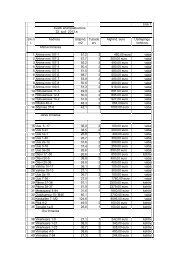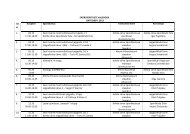FINAL CLUSTER ANALYSIS - Kohtla-Järve
FINAL CLUSTER ANALYSIS - Kohtla-Järve
FINAL CLUSTER ANALYSIS - Kohtla-Järve
Create successful ePaper yourself
Turn your PDF publications into a flip-book with our unique Google optimized e-Paper software.
One of the main engines of clusters formation has become<br />
the concept of Special Economic Zones. Cluster initiatives<br />
in Saint Petersburg are implemented in the open dialogue<br />
of authorities, scientifi c circles and business structures:<br />
such cooperation may be described as a triple helix. In January<br />
2008, Saint Petersburg Government has adopted the<br />
Complex Program of Activities for Realization of Innovative<br />
Policy in 2008-2011, consisting of two blocs, both of which<br />
include direct and indirect cluster activities. Cluster policy<br />
of Saint Petersburg includes:<br />
Planning activities of SPb cluster policy realization,<br />
Assistance in development of pilot innovative cluster<br />
Research activities for pointing out industrial and interindustrial<br />
groups, complementary small enterprises of<br />
SPb in prioritized sectors of with export potential or<br />
potential of import-substitution (in the framework of<br />
cluster policy development).<br />
Saint Petersburg as an industrial centre, “engine” for cluster<br />
building, the following sectors are to be mentioned:<br />
Wood-processing industry,<br />
Shipbuilding (such historical large-scale plants, as: “Baltic<br />
Plant”, “Admiralty Dockyards”, now forming Joint<br />
Shipbuilding Corp., partly owned by the state)<br />
Instrument-manufacturing<br />
Defense engineering with traditional high-level scientifi<br />
c school<br />
Energy engineering (“Electrosila”, turbine plant)<br />
Food industry (joint ventures)<br />
In general, app. 480 000 employees are working in manufacturing.<br />
In case of Russian-Estonian, cluster initiative Saint Petersburg<br />
should become the centre of information and new<br />
knowledge production. Saint Petersburg is one of the Russian’s<br />
main information technology centres, playing a signifi<br />
cant role in the world’s ITC exports. Certain domains of<br />
specialization in the IT sector can be identifi ed as follows:<br />
navigation, speech recognition, translation and educational<br />
software. Summarizing advantages of Saint Petersburg<br />
as a centre for trans-border clustering, it is important to put<br />
an accent on diversifi ed structure of production, innovative<br />
potential and role of a transportation hub.<br />
According to the offi cial sources, currently, attracting investment<br />
in the production sector is one of the most important<br />
tasks of the social and economic development of<br />
the Leningrad Region. The Baltic Pipeline System implies<br />
building a new Russian crude oil transhipment terminal<br />
near the city of Primorsk (Vyborg district) – one of the most<br />
perspective projects in the whole of the Russian Federation.<br />
( The structure of gross value added of the Leningrad region<br />
is rather mature: industrial output makes 1/3. In the structure<br />
of production, prevail: food industry, including tobacco<br />
and beverages, pulp & paper, means of transportation, oil<br />
products and chemical products. Total share of these types<br />
of production made in 2007.4 % of the completely industrial<br />
output. Additional investments are also planned for the construction<br />
materials industry engineering and metal processing<br />
and the light and metallurgy sector.<br />
In practice, Saint Petersburg city Administration announced<br />
a tender among diff erent scale companies for a pilot cluster<br />
creation. Recently two main branches of cluster development<br />
are of great attention of the municipals: automobile<br />
industry and electronics.<br />
Overall, Documentary survey revealed that the following<br />
company groupings that may have a tendency to further<br />
develop into clusters in Ida-Virumaa are:<br />
Manufacture of pulp, paper and paper<br />
products; publishing and printing<br />
Construction<br />
Woodworking<br />
Manufacture of chemicals, chemical<br />
products and man-made fi bers<br />
Table 11<br />
Manufacture of machinery and equipment<br />
n.e.c.<br />
Transport and communication<br />
Hospitality<br />
Final Cluster Analysis<br />
23


